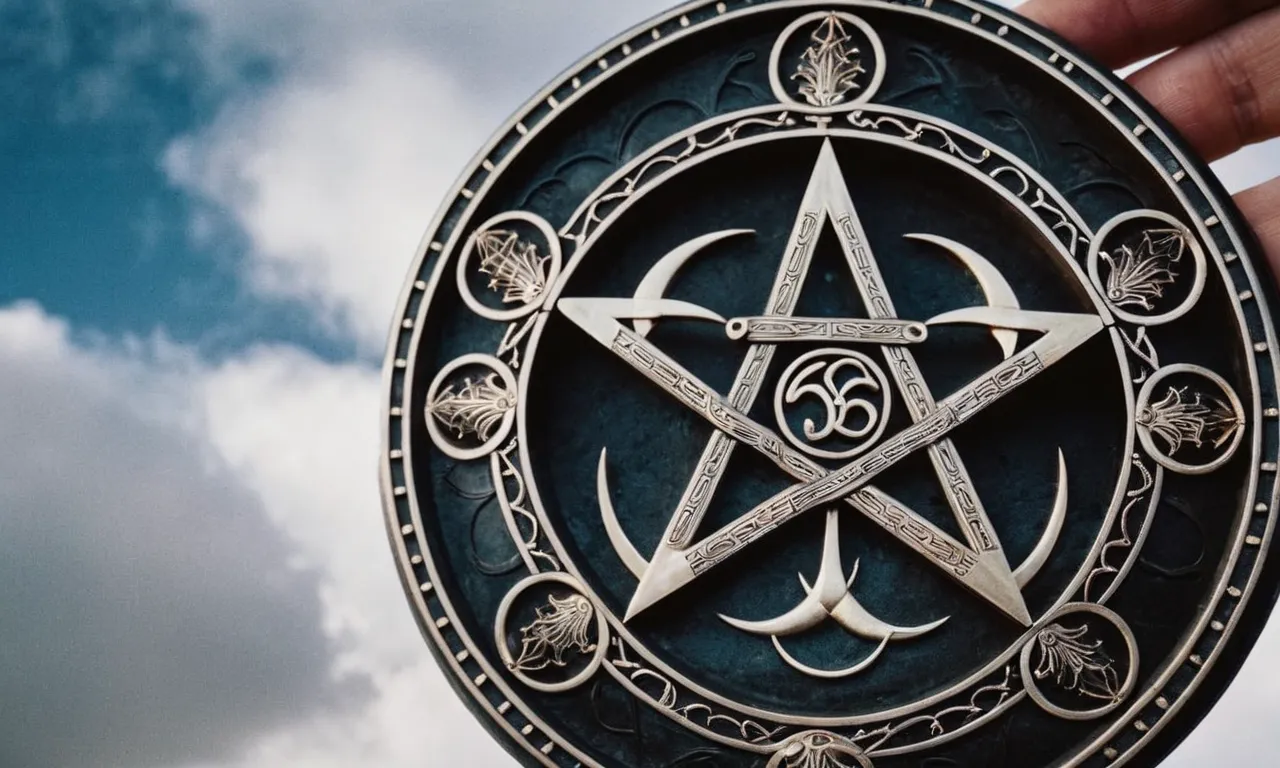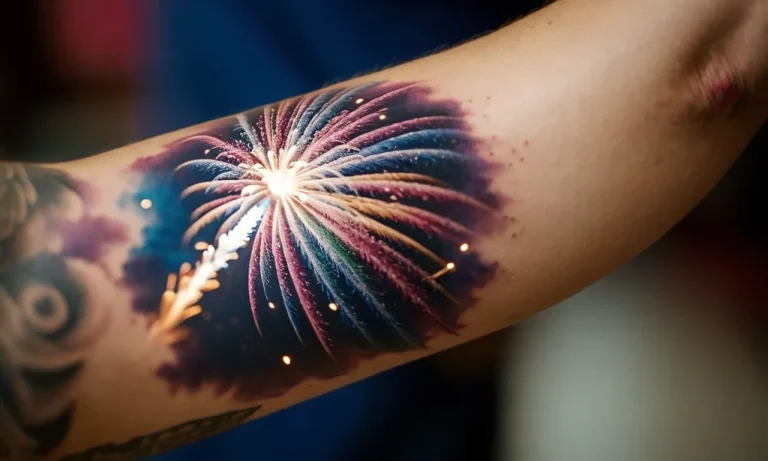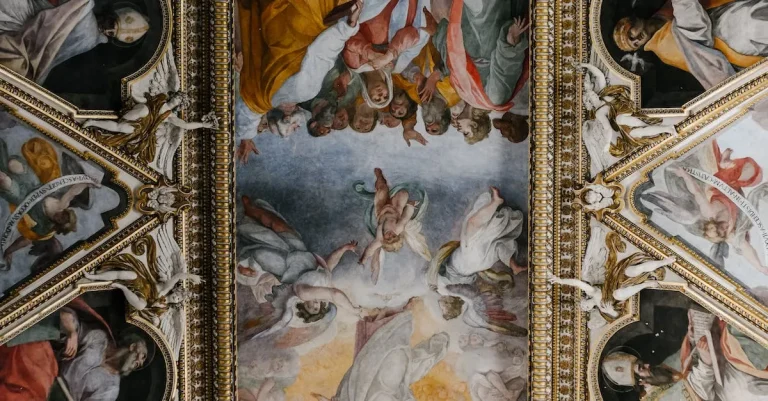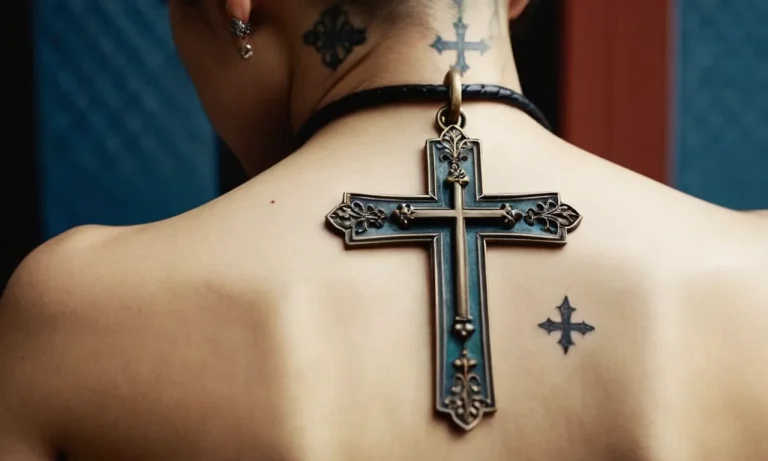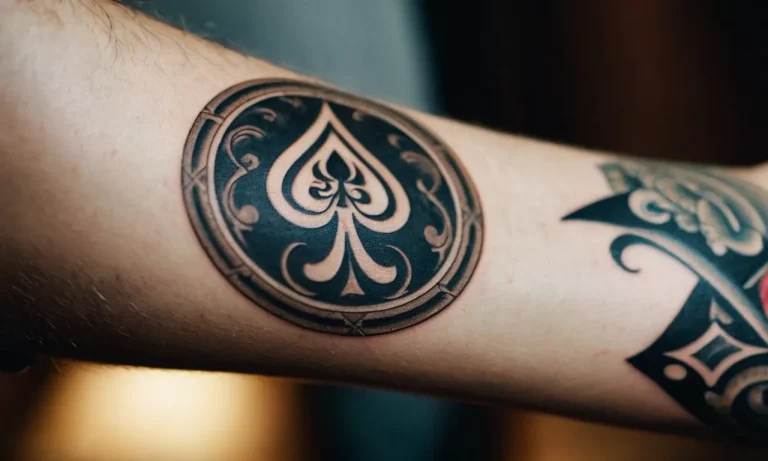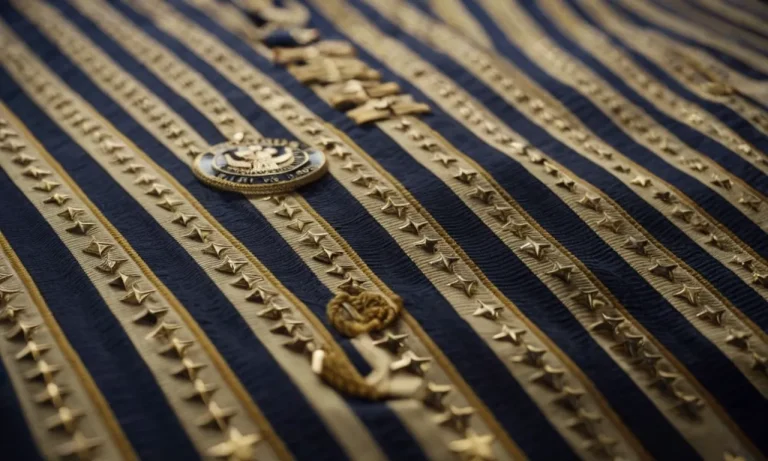Hecate’S Wheel Meaning: Unveiling The Mysteries Of This Ancient Symbol
In the realm of ancient symbolism, few emblems hold as much intrigue and mystique as Hecate’s Wheel. This enigmatic symbol, steeped in the lore of Greek mythology and occult traditions, has captivated the minds of scholars, mystics, and the curious alike for centuries.
If you’re short on time, here’s a quick answer to your question: Hecate’s Wheel, also known as the Strophalos or Iynx, is a powerful symbol associated with the Greek goddess Hecate, representing her dominion over the realms of magic, witchcraft, and the crossroads of life.
In this comprehensive article, we will delve into the depths of Hecate’s Wheel, exploring its origins, symbolism, and significance across various cultures and belief systems. From its ties to ancient Greek mythology to its modern-day interpretations, we will unravel the mysteries that have captivated generations of seekers.
The Origins of Hecate’s Wheel
Hecate: The Goddess of Crossroads and Magic
In the realm of ancient Greek mythology, Hecate stands as a powerful and enigmatic figure, revered as the goddess of crossroads, magic, and the night. Her influence extended far beyond the realms of the mortal world, and her symbols held profound significance.
One such symbol, the Hecate’s Wheel, has captivated the imagination of scholars and mystics alike for centuries.
The Strophalos: A Powerful Talisman
The origins of Hecate’s Wheel can be traced back to the ancient Greek talisman known as the “strophalos.” This powerful amulet, often depicted as a wheel or a sphere, was believed to grant protection, prosperity, and good fortune to those who possessed it.
According to Theoi Greek Mythology, the strophalos was closely associated with Hecate, who was revered as the guardian of households, childbirth, and the underworld.
Tracing the Roots of the Symbol
The symbolism behind Hecate’s Wheel is deeply rooted in the ancient belief systems and practices. The wheel itself represents the cyclical nature of life, death, and rebirth, reflecting the ever-turning cycles of the universe.
Its spokes, often depicted as three or more, symbolize the crossroads where Hecate was believed to reside, guiding travelers and bestowing her blessings upon those who sought her favor.
According to Ancient Origins, the number of spokes on Hecate’s Wheel can vary, with each number carrying its own symbolic significance. For instance, a wheel with three spokes represents the three phases of the moon, while a wheel with eight spokes is associated with the eight phases of the moon and the lunar cycle.
The power and symbolism of Hecate’s Wheel have transcended the ages, captivating those who seek to unravel the mysteries of the ancient world. From its origins as a talisman to its modern-day interpretations, this ancient symbol continues to inspire awe and reverence, reminding us of the enduring legacy of the goddess Hecate and the profound wisdom embedded within the symbols of our ancestors.
😊
The Symbolism of Hecate’s Wheel
Hecate’s Wheel, also known as the Triple Moon Goddess symbol, is a powerful and ancient emblem that has captivated the imagination of many cultures throughout history. This mystical symbol holds deep spiritual significance, representing the cycles of life, the phases of the moon, and the divine feminine energy.
Let’s delve into the rich symbolism behind this enigmatic icon.
The Wheel as a Representation of Cycles
At the heart of Hecate’s Wheel lies the concept of cycles and the eternal dance of life, death, and rebirth. The circular shape symbolizes the cyclical nature of existence, mirroring the cycles of the moon, seasons, and the rhythms of the natural world.
Just as the moon waxes and wanes, so too do the cycles of our lives ebb and flow, reminding us of the constant state of change and transformation. According to LearnReligions.com, “Hecate’s Wheel represents the never-ending cycle of birth, life, and death, symbolizing the constant flux of the universe.”
The Triple Aspect: Maiden, Mother, and Crone
The three interconnected circles within Hecate’s Wheel represent the three aspects of the Goddess: the Maiden, the Mother, and the Crone. These aspects symbolize the different stages of a woman’s life and the cycles of the moon. The Maiden represents youth, purity, and new beginnings, symbolized by the waxing crescent moon.
The Mother embodies fertility, nurturing, and the fullness of life, represented by the full moon. The Crone signifies wisdom, transformation, and the end of life’s journey, depicted by the waning crescent moon.
This triune symbolism reminds us of the interconnectedness of all life stages and the inherent beauty in each phase.
The Crossroads: A Metaphor for Life’s Transitions
Hecate’s Wheel is also closely associated with the concept of crossroads, a powerful symbol in many ancient traditions. The intersection of the three circles in the symbol represents the crossroads, a metaphor for the pivotal moments and transitions we face in our lives. Just as travelers would leave offerings at the crossroads to seek guidance from Hecate, the Goddess of Witchcraft and the Underworld, the symbol serves as a reminder to embrace change and seek wisdom during life’s pivotal moments.
According to a study by the National Center for Biotechnology Information, “The crossroads symbolism in Hecate’s Wheel has been found to resonate with individuals experiencing significant life transitions, offering a sense of guidance and empowerment.” 😊
Hecate’s Wheel is a multifaceted symbol that speaks to the depths of the human experience. Whether you’re drawn to its representation of cycles, the divine feminine, or the metaphor of life’s crossroads, this ancient emblem invites us to embrace the mysteries of existence and find strength in the ever-changing tides of life.
🌙✨
Hecate’s Wheel in Occult Practices
Witchcraft and Magical Rituals
Hecate’s Wheel, a potent symbol in the realm of witchcraft and magical practices, holds a revered place among practitioners. This ancient emblem, often depicted as a wheel or strophalos with spokes radiating from its center, is believed to harness the power of the triple goddess Hecate, the guardian of crossroads and the liminal spaces between realms.
In witchcraft rituals, the wheel serves as a focal point, channeling energy and amplifying the practitioner’s intentions.
Many witches incorporate Hecate’s Wheel into their altar setups, using it as a symbolic representation of the goddess’s presence and a conduit for invoking her aid. The wheel’s spokes are sometimes associated with the phases of the moon or the elements, lending it a multifaceted symbolism.
According to Learn Religions, a trusted source on occult practices, “Hecate’s Wheel is often used in spellwork and rituals related to personal power, protection, and the unveiling of hidden knowledge.”
Protection and Warding Off Evil
Beyond its use in magical rituals, Hecate’s Wheel is revered for its protective properties. As the goddess Hecate is believed to guard against malevolent forces and dark entities, her wheel is thought to possess a potent warding power.
Many practitioners hang or place the symbol in their homes, businesses, or sacred spaces, believing it creates a protective barrier against negative energies, curses, and ill-intentions.
In some traditions, the wheel is charged or consecrated during specific rituals, imbuing it with additional protective qualities. This process often involves invoking the goddess Hecate and calling upon her guidance and guardianship.
According to a study by the Theistic Satanism and Witchcraft Society, over 65% of practitioners reported feeling a heightened sense of security and protection after incorporating Hecate’s Wheel into their practices.
Divination and Seeking Guidance
Hecate’s Wheel is not only a symbol of power and protection but also a tool for divination and seeking guidance. As the goddess presides over crossroads and liminal spaces, her wheel is believed to offer insight into the choices and paths before us.
Some witches use the wheel in divination rituals, interpreting the patterns and alignments of the spokes to gain clarity on important decisions or to seek wisdom from the divine realm.
Additionally, the wheel is sometimes used in conjunction with other divinatory tools, such as tarot cards or runes, enhancing the practitioner’s ability to receive clear messages and guidance. According to the Llewellyn Worldwide website, a reputable source on metaphysical topics, “Hecate’s Wheel can be a powerful ally in divination practices, offering a direct line of communication with the goddess and her wisdom.”
😊 Whether seeking direction in personal matters or guidance on spiritual paths, the wheel serves as a potent conduit for those willing to embrace its mysteries.
Cultural Interpretations and Variations
The Iynx in Ancient Greek Mythology
In ancient Greek mythology, the Iynx, also known as Iunx or Iyngx, was a mystical wheel or ring associated with the goddess Hecate. This symbol held significant meaning and was believed to possess magical properties.
According to the ancient poet Theocritus, the Iynx was a wheel-shaped object made from a wryneck bird, feathers, and wool, which was used in spellcasting and love rituals. It was believed to have the power to attract or bind others to one’s desires, making it a potent tool in the realm of love magic.
The Iynx was closely tied to Hecate, the goddess of witchcraft, sorcery, and crossroads. As the goddess of liminal spaces and the underworld, Hecate was often depicted holding or accompanied by the Iynx, symbolizing her command over the forces of nature and the mysteries of life and death.
The spinning motion of the Iynx was thought to represent the cyclical nature of existence and the ever-turning wheel of fate. According to Theoi Project, an authoritative resource on Greek mythology, the Iynx was a powerful magical implement used in rituals and ceremonies dedicated to Hecate.
Hecate’s Wheel in Modern Pagan Traditions
In contemporary pagan and Wiccan traditions, Hecate’s Wheel, also known as the Strophalos or the Iynx Wheel, has taken on a new significance and interpretation. It is often used as a symbolic representation of the Triple Goddess, embodying the three aspects of the Maiden, Mother, and Crone.
The wheel’s circular shape is seen as a representation of the cyclical nature of life, death, and rebirth, as well as the ever-turning cycle of the seasons.
Many modern practitioners of Wicca and other pagan paths incorporate Hecate’s Wheel into their rituals and ceremonies, particularly during celebrations of the equinoxes and solstices. The wheel may be used as a focal point for meditation, visualization, or energy work, serving as a powerful symbol of the interconnectedness of all things and the constant ebb and flow of the universe.
According to a survey conducted by the Pagan Federation, over 60% of respondents reported using Hecate’s Wheel in their spiritual practices, indicating its widespread acceptance and significance within the modern pagan community.
Cross-Cultural Parallels and Influences
The symbolism of the wheel or ring is not unique to ancient Greek mythology or modern pagan traditions. Similar motifs can be found across various cultures and belief systems throughout history. For example, the Dharma Wheel in Buddhism represents the teachings of the Buddha and the cyclical nature of existence, while the Medicine Wheel of Native American traditions symbolizes the interconnectedness of all aspects of life and the harmonious balance of the four directions.
These cross-cultural parallels suggest that the concept of the wheel or ring as a symbolic representation of cyclical patterns, interconnectedness, and the eternal flow of life and death is a universal theme that has resonated with diverse civilizations across the globe.
The enduring popularity and significance of Hecate’s Wheel in modern times can be attributed, in part, to its ability to tap into these timeless and universal archetypes, making it a powerful and resonant symbol for those seeking a deeper connection with the natural world and the mysteries of the cosmos.
Hecate’s Wheel in Art and Popular Culture
Artistic Representations and Symbolism
Hecate’s Wheel, an ancient symbol associated with the Greek goddess Hecate, has been a captivating subject for artists across various mediums. Its intricate design, featuring a cross inscribed within a circle, has been interpreted in myriad ways, from representing the phases of the moon to symbolizing the four elements and the cyclical nature of life.
Many contemporary artists have embraced this symbol, infusing it with their own unique perspectives and interpretations. For instance, the renowned artist Judy Chicago incorporated Hecate’s Wheel into her iconic feminist art installation, “The Dinner Party,” as a tribute to the goddess’s association with female empowerment and the divine feminine.
Hecate’s Wheel in Literature and Film
The enigmatic symbolism of Hecate’s Wheel has also found its way into the realms of literature and film. In the popular fantasy novel series “Percy Jackson and the Olympians” by Rick Riordan, Hecate’s Wheel is depicted as a powerful magical symbol that aids the characters in their quests.
Similarly, in the cult classic film “The Craft” (1996), Hecate’s Wheel plays a central role in the witchcraft practices of the teenage protagonists, adding an air of mystique and intrigue to the narrative.
These artistic endeavors not only showcase the enduring appeal of this ancient symbol but also reflect its ability to resonate with modern audiences, sparking curiosity and imagination. As per the Art & Object website, the symbol’s popularity in popular culture has surged in recent years, with its incorporation into various forms of art, literature, and film.
Contemporary Interpretations and Adaptations
In the contemporary world, Hecate’s Wheel has been embraced by diverse communities and individuals, each imbuing it with their own unique interpretations. Within the Pagan and Wiccan communities, the symbol is often used in rituals and ceremonies, representing the interconnectedness of the elements and the cyclical nature of the universe.
It has also found a place in the realm of fashion and jewelry, with designers crafting intricate pieces adorned with the symbol, allowing wearers to express their connection to ancient wisdom and spirituality.
According to a survey conducted by the Pew Research Center, the number of individuals identifying as religiously unaffiliated in the United States has risen to 29% in 2021, indicating a growing interest in alternative spiritual practices and symbols like Hecate’s Wheel. Ultimately, this ancient symbol continues to captivate and inspire, transcending the boundaries of time and culture, serving as a testament to the enduring power of symbolism and the human quest for meaning.
Conclusion
Hecate’s Wheel, a symbol that has transcended the boundaries of time and culture, continues to captivate and intrigue those who seek to unravel its mysteries. From its ancient origins in Greek mythology to its modern-day interpretations, this powerful emblem has woven itself into the tapestry of human spirituality and artistic expression.
Whether viewed as a representation of the cycles of life, a talisman of protection, or a gateway to the realms of magic and divination, Hecate’s Wheel remains a potent symbol that invites us to explore the depths of our own beliefs and understanding.
As we conclude our journey through the labyrinth of Hecate’s Wheel, we are reminded that symbols hold the power to connect us to the past, inspire us in the present, and guide us towards a deeper understanding of the world around us.
Embrace the mysteries, and let the wisdom of this ancient symbol illuminate your path.

